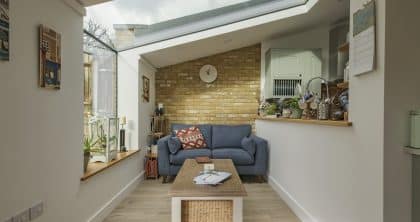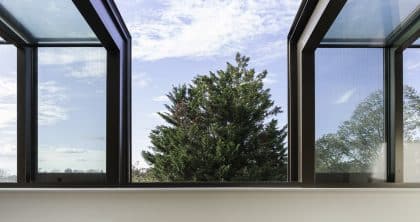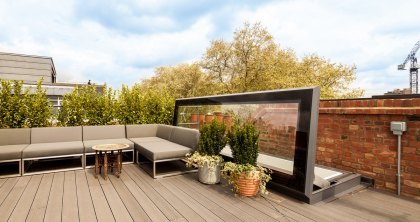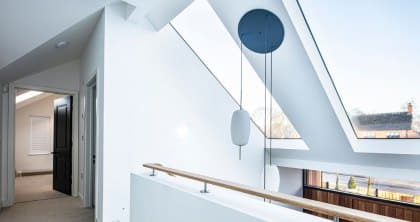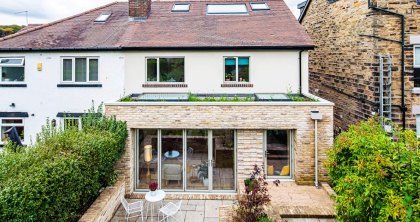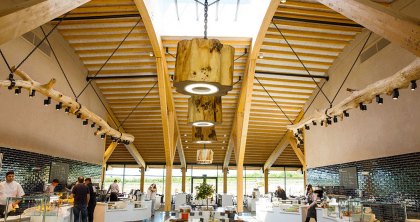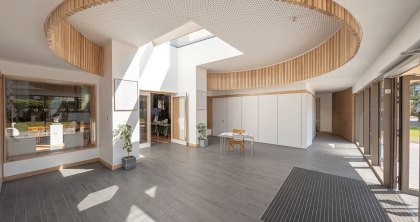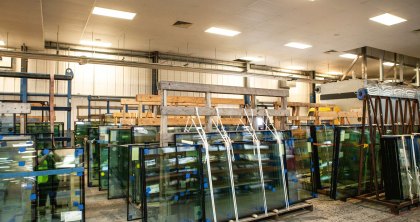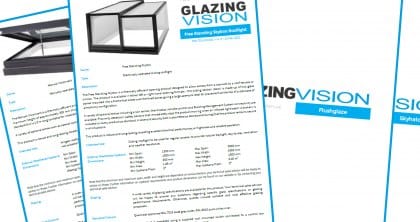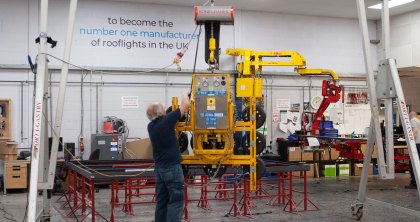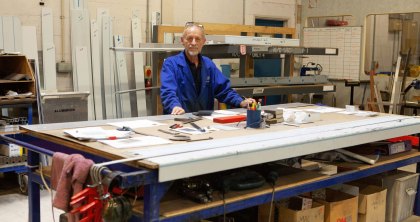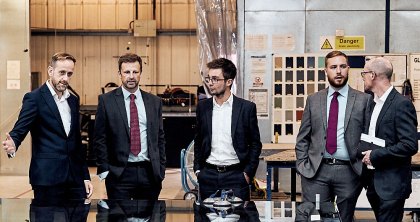If you’re looking to construct a terrace or roof garden box rooflights can be the key to unlocking vital roof top space. Essentially a ‘sliding glass box’ these roof lights can provide a technical solution as well as an aesthetically pleasing one for architects and building occupants alike.
These contemporary styled rooflights are designed to unlock roof space and allow full use of the area without the requirement for additional balustrading.
Architectural rooflight manufacturer Glazing Vision has just released new and improved versions of their ever-popular box rooflights. More than just a rooflight, these units provide access, natural ventilation and daylight to dwellings and best of all, a significant amount of the initial cost can be recouped by the increased value of the property due to the inclusion of a terrace.
There are two standard versions of this product, a ‘three wall box’ which is designed to be enclosed within the building fabric and a ‘free standing box’ which stands alone and is glazed on all faces.
Both of these rooflights feature a retracting glazed section that slides over a fixed section of glass providing a clear 50% opening and sufficient head height for easy access.
Utilising a new ultra minimal extruded aluminium framework design, glass to framework ratios have been dramatically improved. The framework itself now features 39mm polyamide thermal breaks and concealed closed-cell PIR insulation providing excellent thermal performance and drastically reducing the chances of cold bridging.
For a sleek but robust weather proof finish, both internal and external finishes are available in any RAL colour using a Qualicoat approved powder coating system.
Glass specification features Glazing Vision’s standard heat soak tested toughened soft coat low e glass but is now also available in a triple glazed option for those clients seeking even higher thermal performance and reduced u-values.
The box rooflight range has recently undergone testing to BS EN 13051 for water penetration and hose testing to CWCT standards ensuring that the units can stand up to the worst the weather can throw at it.
Drive mechanisms have been beefed up, the rooflight now features a dual drive system as standard powered by an external 24V power supply. Using two drive systems reduces stress on frame and components and provides the user with a visibly more fluid open and close function compared to the outgoing model.
The drive mechanism itself is a robust machined rack and pinion arrangement which features a built in anti lift function and one-way clutch design that prevents forced entry through disengagement of the drive mechanism.
Security is further enhanced with the inclusion of a tough solenoid bolt locking device which secures the sliding section of the rooflight to its base frame, this was previously an optional extra but is now included as a standard fitment.
The rooflights adopt a ‘no more tools’ option when it comes to manual override and the unit can be closed without power in the event of a fault or opened again using the supplied magnet which is built into the framework so no more messing about with allen keys.
Demand for additional living space within existing buildings continues to grow and Glazing Vision are completing installs in the United States and across Europe with increasing regularity.
These new box rooflight are very much an evolutionary step forwards in terms of design, which has drawn on the company’s extensive manufacturing experience in the architectural rooflight market.
Typical Projects
Glazing Visions rooflights can be seen in developments such as River Street Mews, Islington and St Dunstan’s House in the Chancery Lane Conservation area.
These products represent the flagship rooflights in Glazing Vision’s range, prices start at £10,600 for a smaller sized 3WB with project values averaging £15- 25,000. Bespoke options can run into costs circa £50-£60,000.
Project types will generally be located centrally in the city with most business coming from London where clients are maximizing their space, normally by utilising roof space or excavating basement space.
Box rooflights are also very popular in cities like Amsterdam and Paris where roof terrace culture has been the accepted norm for longer, enquiries have also been received in the US where the architectural style of buildings is similar to those in London, typically multi storey period town houses.

